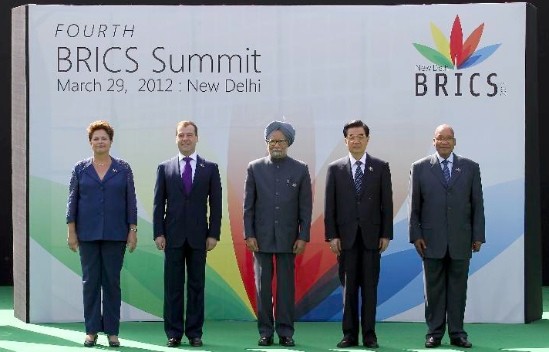Brazil Russia India China South Africa BRICSA China Real Time Report
Post on: 20 Июнь, 2015 No Comment

South Africa
It’s official. China’s Ministry of Foreign Affairs said on Tuesday that Brazil, Russia, India and China have agreed to invite South Africa to join their grouping of emerging economies, referred to as BRIC.
RODGER BOSCH/AFP/Getty Images Chinese Vice President Xi Jinping, left, with South African Deputy President Kgalema Motlanthe in November
There’s been no announcement as to whether the acronym might change, but one possibility, BRICSA, has nice ring to it.
South Africa’s government will be pleased. But the notion has left some scratching their heads. BRIC, after all, is a term coined by a Goldman Sachs economist in 2001 to refer to the four large, fast-growing economies that collectively will take up an ever-greater share of global economic output. Since then, it has become a popular term on Wall Street as a kind of short-hand for the red-hot developing economies that excite investors. (The Chinese translation renders the term BRIC as gold brick, adding even more luster to the concept. Sell-side analysts around the world might approve.)
Advertisement
So how could South Africa join what is essentially a concept in the minds of investors—one defined by the names of its four existing constituentsespecially when the rainbow nation lacks the main unifying characteristic of the group: a fast-growing economy?
Turns out that what Beijing actually means is that South Africa can participate in a meeting of the BRIC nations. Speaking at a press briefing Tuesday, Ministry of Foreign Affairs spokeswoman Jiang Yu said that South Africa has been invited to join the BRIC cooperation mechanism—specifically, to attend the third annual summit of BRIC countries in China next year.
The addition of South Africa will solidify the BRIC cooperation mechanism as a political grouping of developing countries—not, presumably, what Goldman originally had in mind. The transition has been underway since the first BRIC summit in Russia in 2009, where the four countries discussed reform of the international financial system and possibility of a new dominant reserve currency. In this sense, it is perhaps most similar to the bloc of four developing countries known as BASIC that emerged at the Copenhagen climate change summit, comprising Brazil, South Africa, India and China. There’s no word so far on whether Russia will be joining that group (making it BRASIC? CRABSI?).
South African President Jacob Zuma has been campaigning to join BRIC. On a state visit to China in August, he noted that there is no African country represented. There is no serious grouping in the world today that lacks African representation, he said at a press briefing in Beijing.
Whatever happens with the cooperation mechanism, for South Africa to actually join its BRIC peers as a darling of Wall Street, it still has work to do. A quick look at projected growth rates shows why. The International Monetary Fund estimates that South African gross domestic product will likely grow a respectable but unexceptional 3.0% in 2010. The IMF projects that China, Brazil, and India will grow by 10.5%, 7.5% and 9.7% respectively this year. Russian, the BRIC laggard, is expected to grow 4.0%.
In the meantime, Goldman Sachs has its own ideas on how the grouping could be expanded. In an April 2007 report (PDF ) Beyond the BRICs, the bank proposed a new grouping of the Next 11, or N-11. While the N-11 may not have the same transformative impact on the world economy that the BRICs may realise, they nonetheless present interesting growth stories, the report said. The N-11 includes Bangladesh, Egypt, Indonesia, Iran, Korea, Mexico, Nigeria, Pakistan, Philippines, Turkey and Vietnam. But not South Africa.
Aaron Back
Sign up for CRT’s daily newsletter to get the latest headlines by email.














